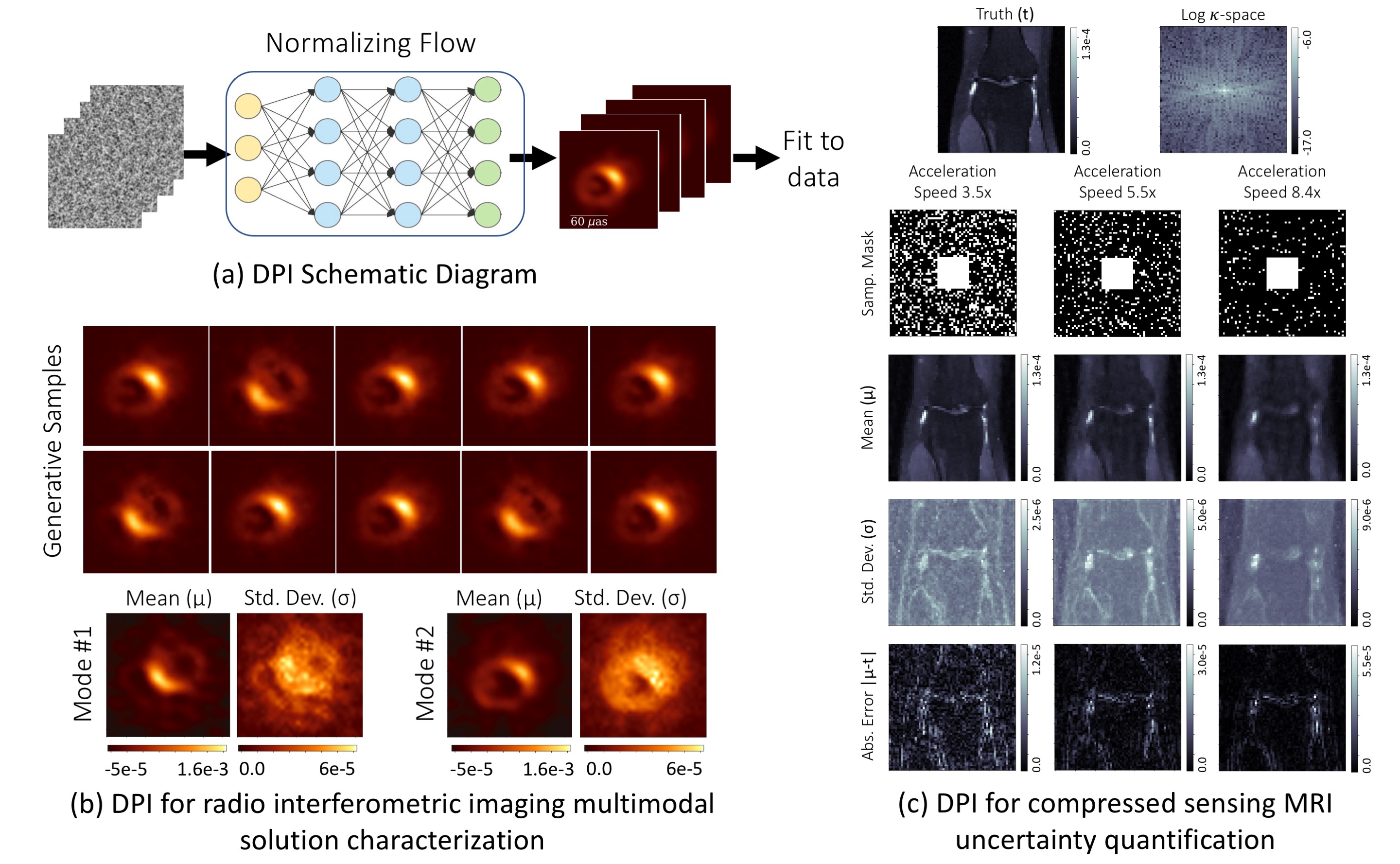

AAAI2021 (Deep Probabilistic Imaging, DPI): Computational image reconstruction algorithms generally produce a single image without any measure of uncertainty or confidence. Regularized Maximum Likelihood (RML) and feed-forward deep learning approaches for inverse problems typically focus on recovering a point estimate. This is a serious limitation when working with underdetermined imaging systems, where it is conceivable that multiple image modes would be consistent with the measured data. Characterizing the space of probable images that explain the observational data is therefore crucial. In this paper, we propose a variational deep probabilistic imaging approach to quantify reconstruction uncertainty. Deep Probabilistic Imaging (DPI) employs an untrained deep generative model to estimate a posterior distribution of an unobserved image. This approach does not require any training data; instead, it optimizes the weights of a neural network to generate image samples that fit a particular measurement dataset. Once the network weights have been learned, the posterior distribution can be efficiently sampled. We demonstrate this approach in the context of interferometric radio imaging, which is used for black hole imaging with the Event Horizon Telescope, and compressed sensing Magnetic Resonance Imaging (MRI).
ApJ2022 (α-Deep Probabilistic Inference, α-DPI): Inference is crucial in modern astronomical research, where hidden astrophysical features and patterns are often estimated from indirect and noisy measurements. Inferring the posterior of hidden features, conditioned on the observed measurements, is essential for understanding the uncertainty of results and downstream scientific interpretations. Traditional approaches for posterior estimation include sampling-based methods and variational inference (VI). However, sampling-based methods are typically slow for high-dimensional inverse problems, while VI often lacks estimation accuracy. In this paper, we propose α-deep probabilistic inference, a deep learning framework that first learns an approximate posterior using α-divergence VI paired with a generative neural network, and then produces more accurate posterior samples through importance reweighting of the network samples. It inherits strengths from both sampling and VI methods: it is fast, accurate, and more scalable to high-dimensional problems than conventional sampling-based approaches. We apply our approach to two high-impact astronomical inference problems using real data: exoplanet astrometry and black hole feature extraction.
paper [AAAI2021] [ApJ2022] code [Github] supplement [pdf]
He Sun, and Katherine L. Bouman (2021). "Deep Probabilistic Imaging: Uncertainty Quantification and Multi-modal Solution Characterization for Computational Imaging." In 35th AAAI Conference on Artificial Intelligence (AAAI).
He Sun, and Katherine L. Bouman, Paul Tiede, Jason J. Wang, Sarah Blunt, and Dimitri Mawet (2022). "α-Deep Probabilistic Inference (α-DPI): efficient uncertainty quantification from exoplanet astrometry to black hole feature extraction." The Astrophysical Journal (ApJ).